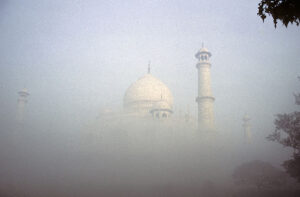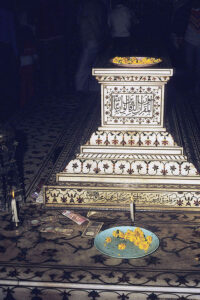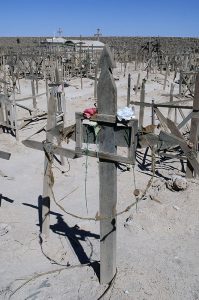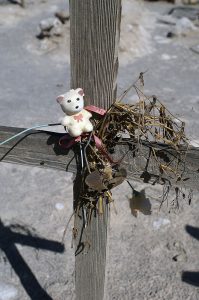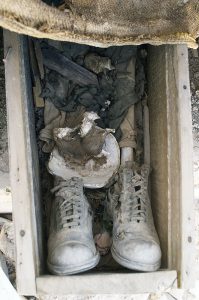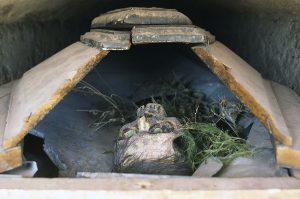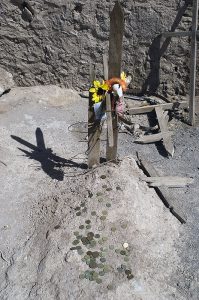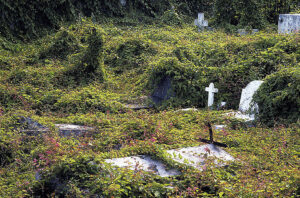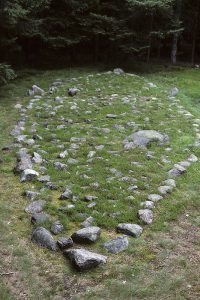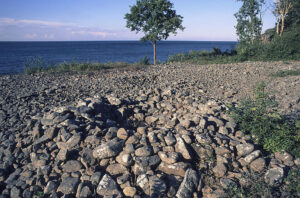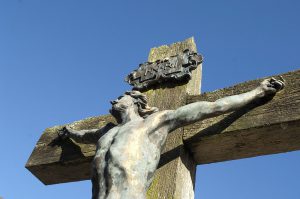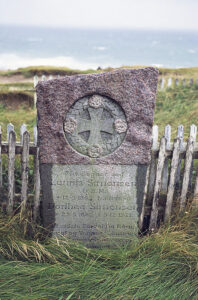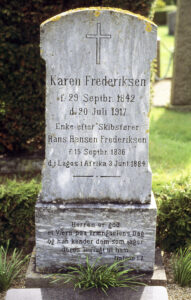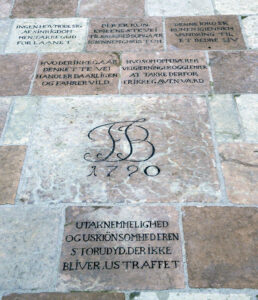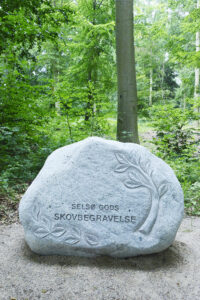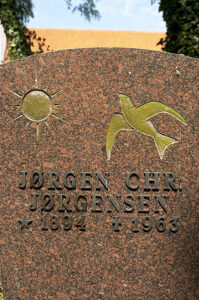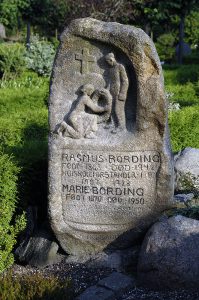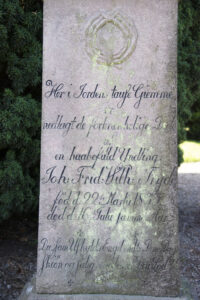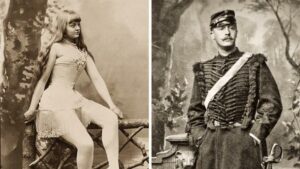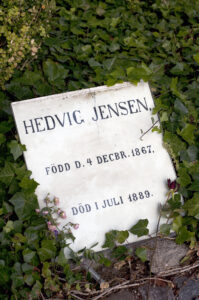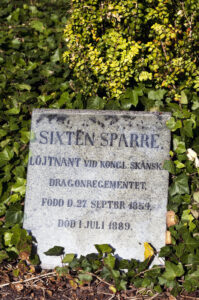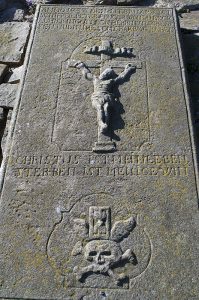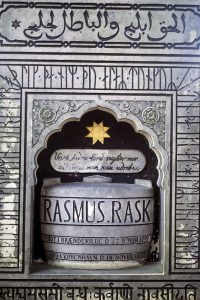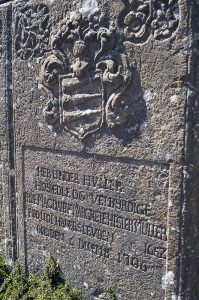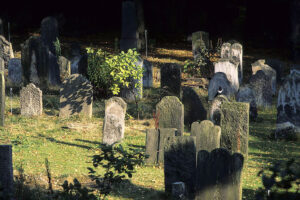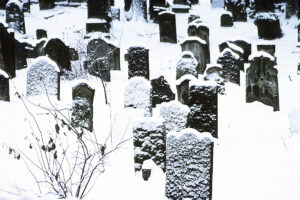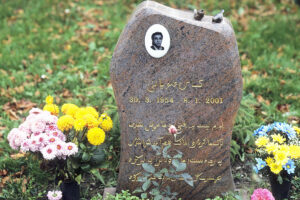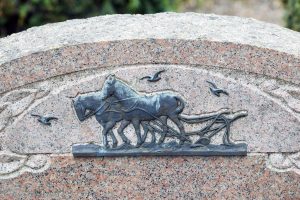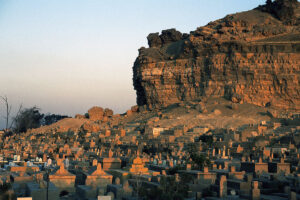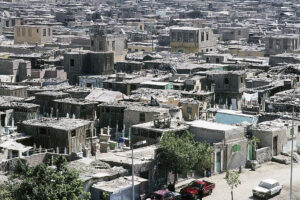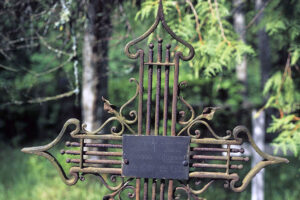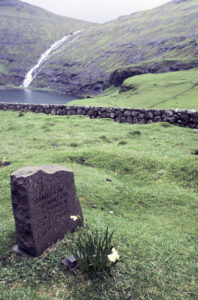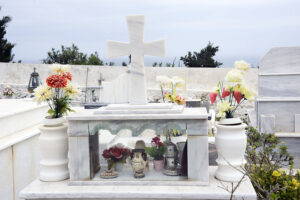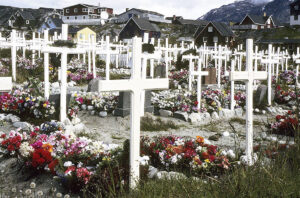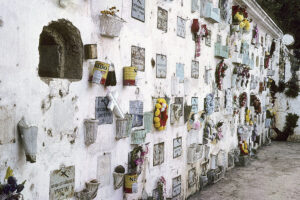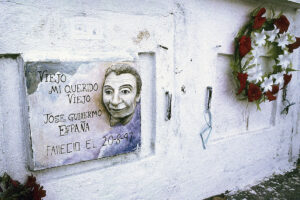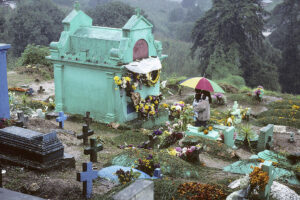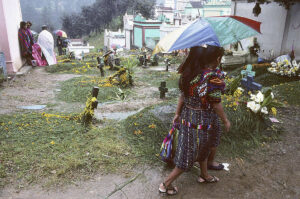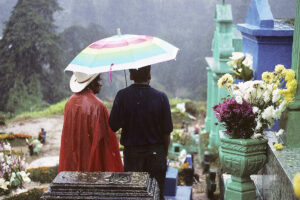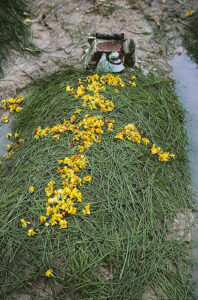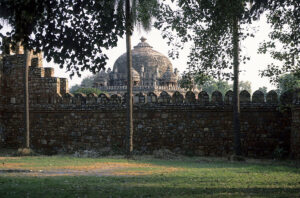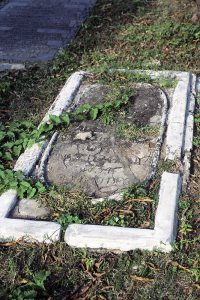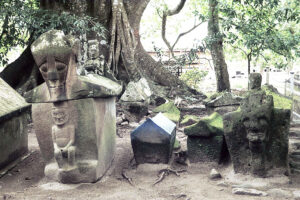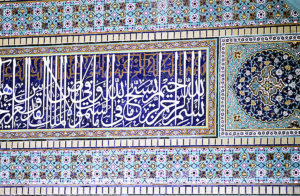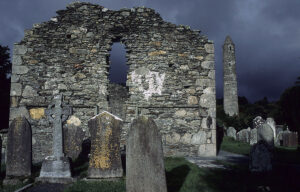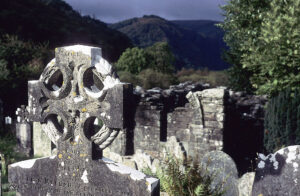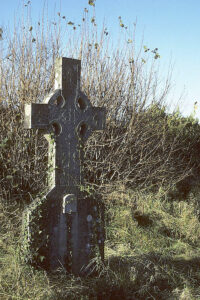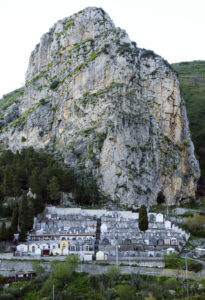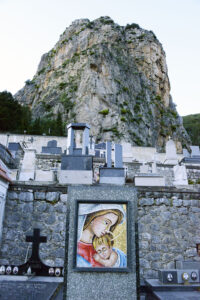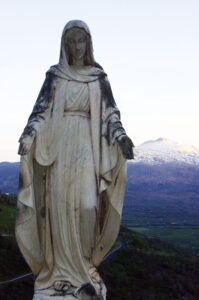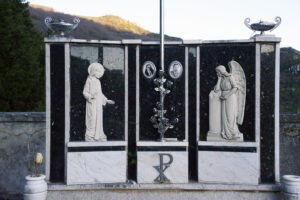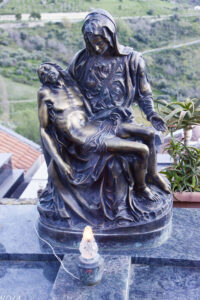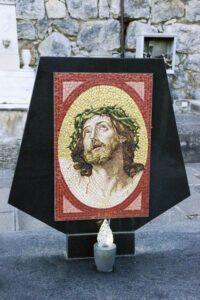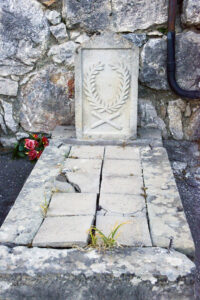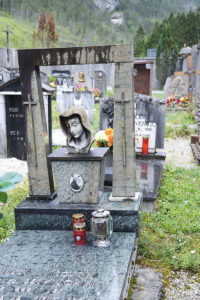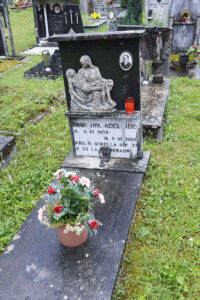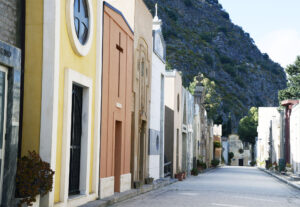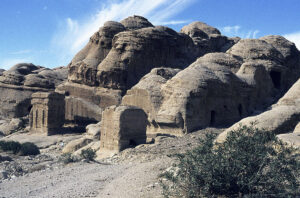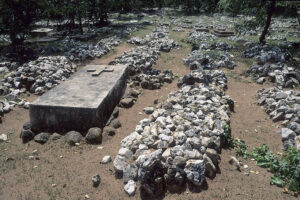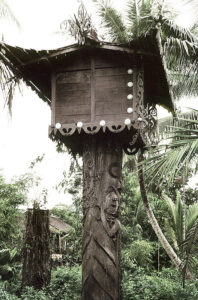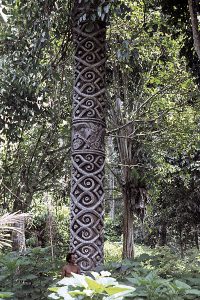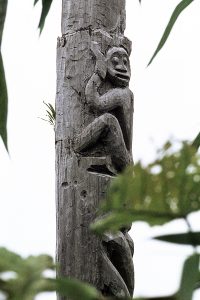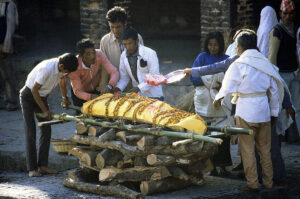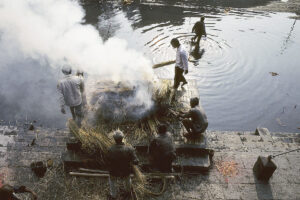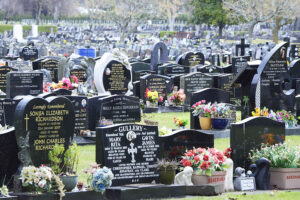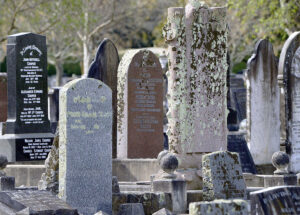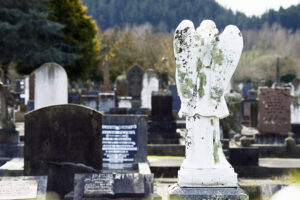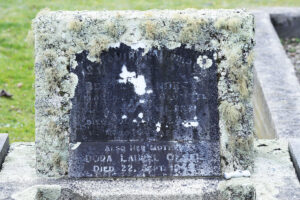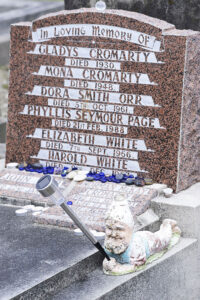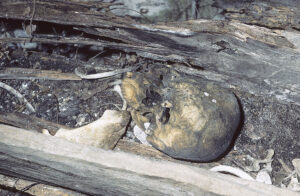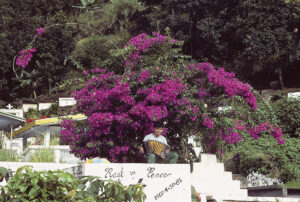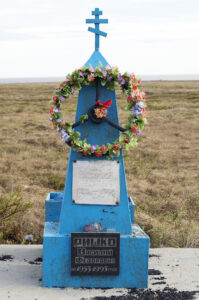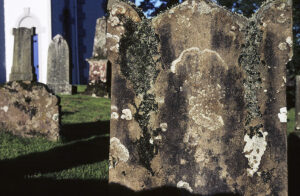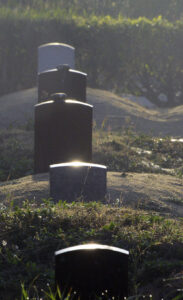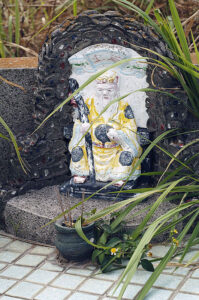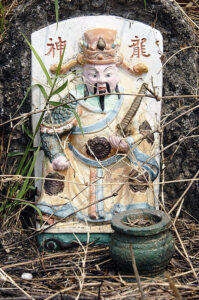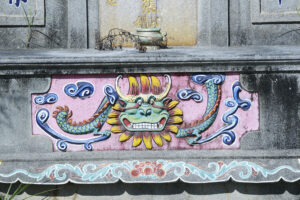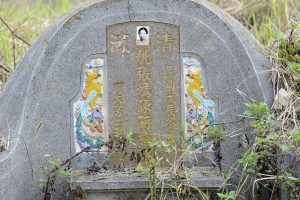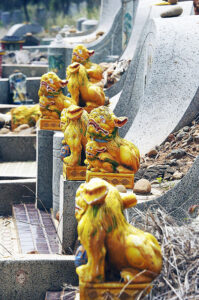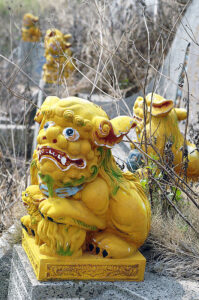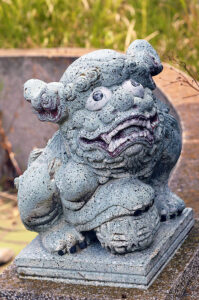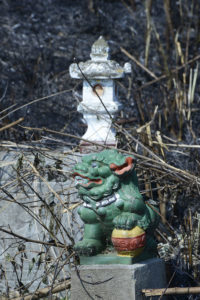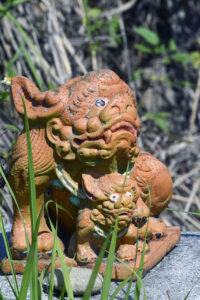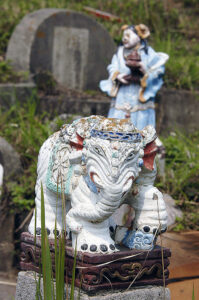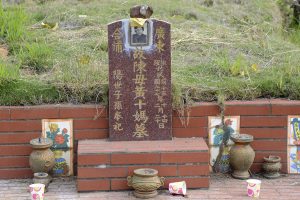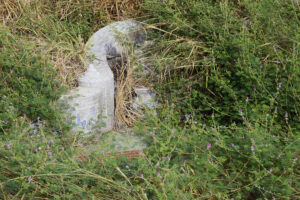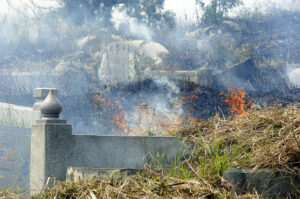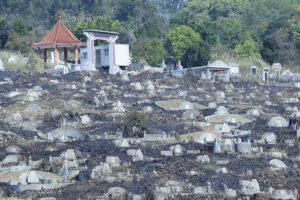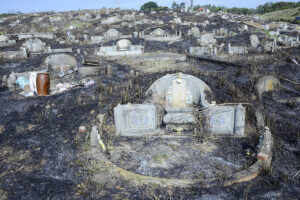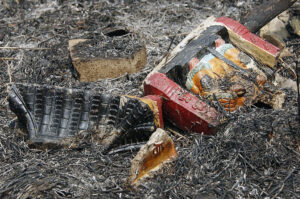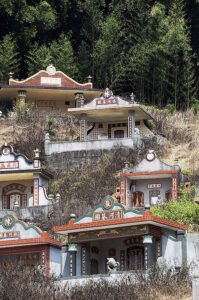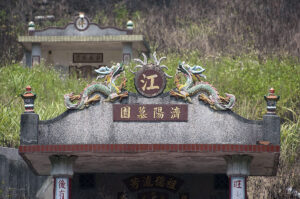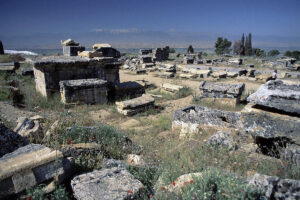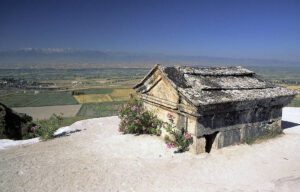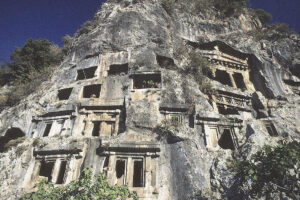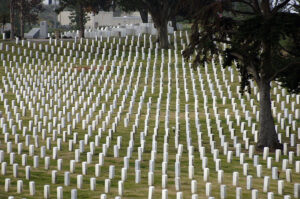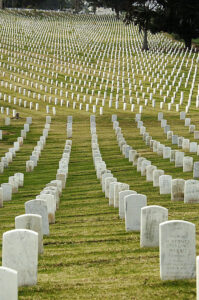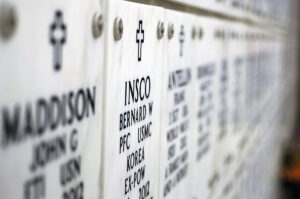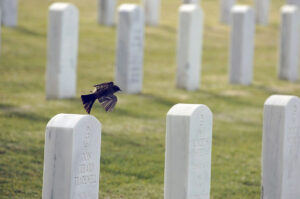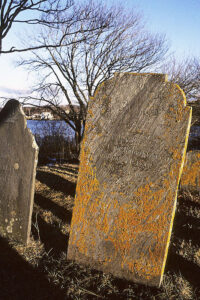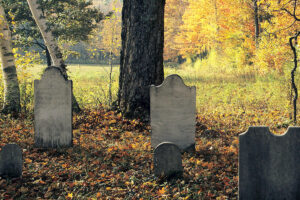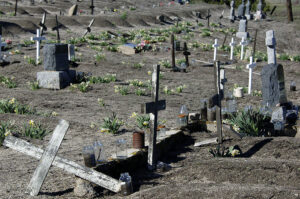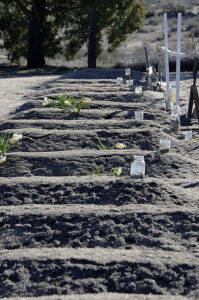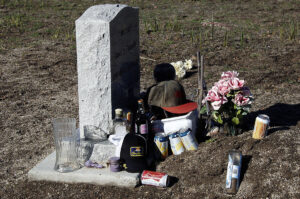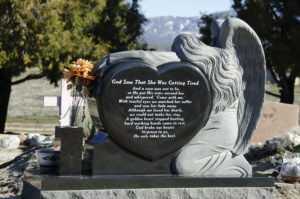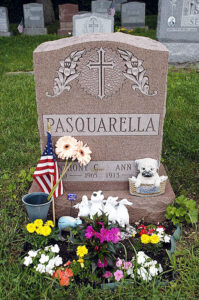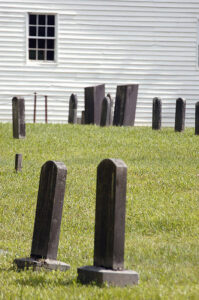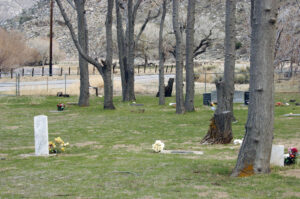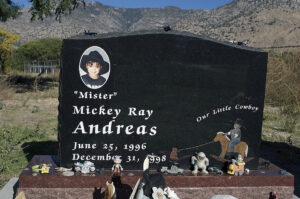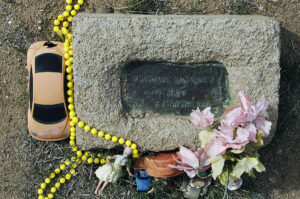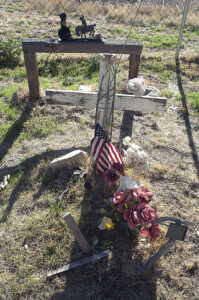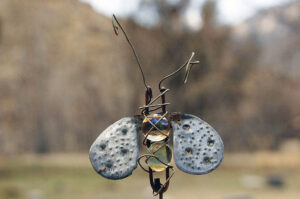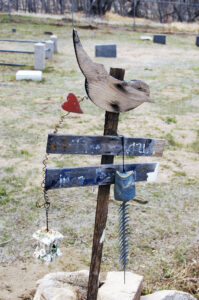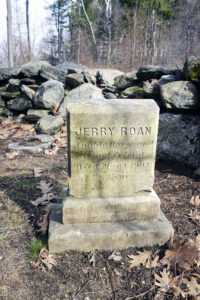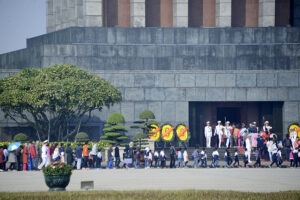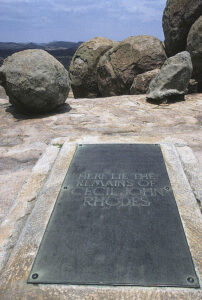Graves
Taj Mahal in morning fog. (Photo copyright © by Kaj Halberg)
The ornamented sarcophagus of Shah Jahan, Taj Mahal. Marigolds and money have been brought as offerings to the grave. (Photo copyright © by Kaj Halberg)
Throne or coffin? – Mughal proverb.
The Muslim Mughal Empire in northern India, also known as the Moghul Empire, was founded in 1526 and lasted until 1858. The proverb above reflects the vicious wars that often broke out between the sons of a deceased emperor, vying for the throne. One example took place during the reign of the 5th emperor of the empire, Shah Jahan (1592-1666), born Shahab-ud-din Muhammad Khurram.
Shah Jahan is most famous for ordering construction of Taj Mahal (‘Crown of the Palace’), a mausoleum near the city of Agra, erected in honour of his favourite wife, Arjumand Banu Begum, called Mumtaz Mahal (‘Chosen One of the Palace’). She died in 1630 after giving birth to her fourteenth child. Construction of this mausoleum lasted 22 years, from 1632 to 1654.
In 1657, Shah Jahan fell seriously ill, and a war between his four sons immediately broke out. The third son, Muhi-ud-din Muhammad (1618-1707), later known as Aurangzeb, won this war and usurped his father’s throne. However, Shah Jahan recovered from his illness, but Aurangzeb put him under house arrest in Agra Fort from 1658 until his death in 1666.
It has been told that he spent his time gazing at Taj Mahal nearby, where his beloved wife was resting. After his death, his coffin was placed beside his wife’s coffin in the mausoleum.
On Passing a Graveyard
May perpetual light shine upon
The faces of all who rest here.
May the lives they lived
Unfold further in spirit.
May all their past travail
Find ease in the kindness of clay.
May the remembering earth
Mind every memory they brought.
May the rains from the heavens
Fall gently upon them.
May the wildflowers and grasses
Whisper their wishes into light.
May we reverence the village of presence
In the stillness of this silent field.
Irish poet, author, and priest John O’Donohue (1956-2008), in Benedictus: A Book of Blessings (2007).
I went to see a movie, got the only empty seat,
I tried to stretch out in it, something blocking my feet.
Finally the lights came up, and I could clearly see
A slab of engraved marble, just staring up at me.
Imagine my surprise, thought I’d left it at home,
But there’s no doubt I’m sitting on my own tombstone.
Lyrics by English songwriter Keith Reid (born 1946). The poem was made famous through performance by the rock group Procol Harum, lead singer Gary Brooker (1945-2022).
Chile
Pueblo Pampa Union is a deserted mining town north of Carmen Alto. Many of the graves in its cemetery are in various stages of decay.
(Photos copyright © by Kaj Halberg)
Note that someone has adorned the eye sockets of this body with bits of leaves. (Photo copyright © by Kaj Halberg)
Grave with offerings of coins, Pueblo Pampa. (Photo copyright © by Kaj Halberg)
Comoro Islands
Cemetery, overgrown by a climber, corallita (Antigonon leptopus), Moroni, Grande Comore. (Photo copyright © by Kaj Halberg)
Denmark
The pictures below show Bronze Age graves on the island of Bornholm, one in which stones are placed to form a ship, the other a cone-shaped pile of stones with a depression in the centre, in Danish called a kraterrøse (‘krater’ = crater).
Many other types of megalithic structures are described on the page Culture: Megaliths.
Bronze Age grave, shaped like a ship, Vestermarie Plantation, Bornholm. (Photo copyright © by Kaj Halberg)
Crater-shaped grave, a kraterrøse, Bornholm. (Photo copyright © by Kaj Halberg)
Tomb with Christ on the cross, Holtug Church, Zealand. The letters INRI are from the Latin, Iesus Nazarenus, Rex Iudaeorum, meaning ‘Jesus the Nazarene, King of the Jews.’ Jesus Christ and the birth of Christianity are described on the page Religion: Christianity. (Photo copyright © by Kaj Halberg)
This tombstone at Mårup Church, Jutland, is adorned with a Maltese Cross – a cross with four equal arms, each ending in two points. (Photo copyright © by Kaj Halberg)
Formerly, a large number of widows were living on the island of Fanø, as the majority of the males were seamen, who lived with the eternal risk of their ship sinking in a storm.
Gravestone of the widow of a seaman, who died in Lagos, Africa. – Sønderho, Fanø. (Photo copyright © by Kaj Halberg)
Tombstone in the western wall of Refsvindinge Church, Funen, commemorating “His Majesty’s Eminent Counsilor” Friederich Bagger (1710-1791), owner of the nearby Manor Juulschou. Beneath the tombstone, several other stones are engraved with various instructions from the same person, including “No-one should brag about his wealth, but be thankful to God for the loan,” and “He who does not take the proper road, is acting poorly and is lost.” (Photos copyright © by Kaj Halberg)
In later years, burials in forests have become common. This picture is from Selsø Manor’s burial site in Østskov, northern Zealand. (Foto copyright © by Kaj Halberg)
Tombstone at Lyø Church, Funen, depicting a sun and a pigeon, with green algae growing in the carvings. (Photo copyright © by Kaj Halberg)
Henry Heerup (1907-1993) was an all-round Danish artist, whose works include paintings, drawings, lithographs, linoleum cuts, and stone sculptures, besides the so-called ‘trash models’, which were composed of old trash.
The tombstone of Henry Heerup and his wife Marion, in Assistens Churchyard, Copenhagen, is adorned with a carving, depicting one of his own drawings. The red leaves in the foreground are Japanese maple (Acer palmatum). (Photo copyright © by Kaj Halberg)
Tombstone of school principal Rasmus Bording and his wife Marie, Ry Church, Jutland. (Photo copyright © by Kaj Halberg)
Below is a gravestone for a small boy, Østermarie, Bornholm, Denmark. The text says: Here, consealed in the silent bosom of the Earth, rest the perishable parts of a hopeful youngster, Joh. Frid. Vilh. Tryde, born March 22nd 1835, dead July 16th the same year. You ended your days as an innocent angel, your lot is wonderful and blessed.
(Photo copyright © by Kaj Halberg)
Hedvig Antoinette Isabella Eleonore Jensen (1867-1889), better known by her stage name Elvira Madigan, was a circus performer, who is best known today for her romantic relationship with Swedish nobleman and cavalry officer Bengt Edvard Sixten Sparre of Rossvik (1854-1889). The relationship ended on the Danish island of Tåsinge, Funen, where he shot her through the head and then killed himself.
(Photo: Public domain)
(Photos copyright © by Kaj Halberg)
This grave from the 1700s, situated on the islet of Christiansø, near Bornholm, contains the remains of a deceased German. The text translates as follows: “Anno 1737, on February 6, Skipper Peter Fenger, from Lübeck, has passed away to the abode of the Lord, and has been buried in this grave. Christ is my life, to die is my gain.”
(Photo copyright © by Kaj Halberg)
The brilliant Danish linguist Rasmus Rask (1787-1832), born Rasmus Christian Nielsen Rasch, wrote several grammars and worked on comparative phonology and morphology. He traveled extensively to study languages, first to Iceland, where he wrote the first grammar of Icelandic, and later to Russia, Persia (today Iran), India, and Ceylon (today Sri Lanka). Rask was the first linguist to draw a connection between the ancient Norse, and the Western and Eastern Germanic languages, as well as to point out the relationship between Lithuanian, Slavonic, Greek, and Latin.
Tombstone of Rasmus Rask, Assistens Churchyard, Copenhagen. Note the various languages engraved on the stone, including runes, Hindi, and Arabic. (Photo copyright © by Kaj Halberg)
The text on this old tombstone at Svaneke Church, Bornholm, Denmark, reads as follows: “Here lies the noble Lady Magdalene Margrete Hesler Müller, born in Haderslev on … 1652, died on December 6, 1706.” (Photo copyright © by Kaj Halberg)
Two seasons in a Jewish cemetery, Nørrebro, Copenhagen. In the summer picture, a magpie (Pica pica) is sitting on one of the tombstones. (Photos copyright © by Kaj Halberg)
Tombstone in a Muslim graveyard, Copenhagen. (Photo copyright © by Kaj Halberg)
Old tombstone, overgrown by common orange lichens (Xanthoria parietina), Christiansø, Bornholm. (Photo copyright © by Kaj Halberg)
Relief on the tombstone of a farmer, depicting a ploughing team, Zealand. (Photo copyright © by Kaj Halberg)
Egypt
Muslim graveyard near the Giza Pyramids, illuminated by the evening sun. (Photo copyright © by Kaj Halberg)
Years ago, homeless people began to settle in a graveyard near the Hakim Mosque, Old Cairo. Over the years, an entire community has evolved – a town within the town of the dead. (Photo copyright © by Kaj Halberg)
Estonia
Iron cross on a grave, Piirsalu. (Photo copyright © by Kaj Halberg)
Faroe Islands
Tombstone, lake, and waterfall, Saksun, Streymoy. (Photo copyright © by Kaj Halberg)
Germany
Grave stones of Catholic nuns in the town of Dorfen, Bavaria. (Photo copyright © by Kaj Halberg)
Greece
Greek-orthodox grave, Rodopos Peninsula, Crete. (Photo copyright © by Kaj Halberg)
Greenland
The graveyard in Nuuk, capital of Greenland. (Photo copyright © by Kaj Halberg)
Guatemala
In this cemetery in the city of Antigua, ashes of the deceased are placed in recesses in a wall to conserve space. (Photo copyright © by Kaj Halberg)
The text on this gravestone in the same graveyard reads as follows: ‘Old, my dear old José Guillermo España’. (Photo copyright © by Kaj Halberg)
In November 1998, hurricane ‘Mitch’ created havoc in Guatemala and other Central American countries. Unofficial reports claimed that about 1,900 millimetres of rain was dumped by this hurricane. Unfortunately, its occurrence coincided with the Catholic Festival of the Dead, which takes place on November 1st and 2nd. However, this did not deter people from performing their usual ceremonies during this festival, including visits to cemeteries to honour deceased relatives.
Our adventures during this hurricane are related on the page Travel episodes – Guatemala 1998: Country of the Mayans.
Despite heavy rainfall during the Festival of the Dead in 1998, people nevertheless gathered in this cemetery in Chichicastenango to decorate the graves of their relatives, and to burn candles or incense. (Photos copyright © by Kaj Halberg)
New grave, adorned with grass, and a cross made from marigolds, Chichicastenango. (Photo copyright © by Kaj Halberg)
Graveyard, Solola. (Photo copyright © by Kaj Halberg)
India
Humayun, whose real name was Nasir-ud-din Muhammad, was the second emperor of the Moghul Empire, comprising what is today north-western India, Pakistan, and Afghanistan. Humayun ruled in two periods, 1531-1540 and 1555-1556. He died in 1556, when he fell down the staircase to his library, hitting his head on the rough stone steps.
Mausoleum of Moghul Emperor Humayun, Delhi. (Photo copyright © by Kaj Halberg)
In November 1618, the Danish King Christian IV ordered admiral Ove Giedde to sail to India with five ships. The aim of this journey was to establish a trading station under the Royal Danish East India Company, to be able to supply the Motherland with cheap spices and textiles. Two years later, Giedde and his crew reached the Coromandel Coast, at the mouth of River Kaveri in present-day Tamil Nadu, South India.
Following negotiations with the Prince of Thanjavur, Giedde obtained permission to build a trading station, which was called Trankebar (in English Tranquebar) – a corruption of the local Tamil name of the place, Tarangambadi, which means ‘singing waves’. In 1660, a fort was completed, named Dansborg (’Danish Castle’). Behind this fort, a town sprang up, fortified with moats and walls, through which a number of gates gave access to the town.
Gravestone at the New Jerusalem Church, Tranquebar. (Photo copyright © by Kaj Halberg)
Indonesia
The Batak are a group of closely realated Austronesian peoples, including the Karo, Pakpak, Simalungun, Toba, Angkola, and Mandailing, who live in a large area of northern Sumatra. My acquaintance with these people stems from a visit to Lake Toba in 1975.
More pictures of the Batak may be seen on the pages People: Children around the world, and Culture: Musicians.
Royal Batak graves in the village of Tomok, Samosir Island, Lake Toba. (Photo copyright © by Kaj Halberg)
Iran
Mashhad, eastern Iran, is a sacred city to the Shi’a Muslims. The origin of the two major denominations within Islam, Sunni and Shi’a, almost date back to the foundation of Islam. Following the death of the Prophet Muhammed, in 632 A.D., certain Muslims, who later called themselves Shi’a (from Shi’atu Ali, ‘followers of Ali’), only acknowledged direct descendants of the Prophet as his heirs, maintaining that God, via Muhammed, had selected his cousin, Ali ibn Abi Talib (601-661), who was also his son-in-law, as imam – leader of Islam. Ali’s sons, Hassan and Husain, were imam number two and three, succeeded by their descendants.
In 681, Husain and his followers went to Iraq to fight against the Caliph of Damascus, who claimed that he was the true heir of Muhammad, selected by a council of elders. The Shi’a did not acknowledge this choice, maintaining that only God could appoint Muhammed’s heirs. In a battle at Karbala, Husain and his men were all killed, and from this day, the Caliphs of Damascus, and later Baghdad, held the power within Islam.
The Shi’a acknowledge a succession of 12 imams, and they maintain that the last of them, Muhammad ibn Hasan al-Mahdi (868-941), vanished without a trace, but will return in due time as the ultimate saviour of mankind and, together with Isa (Jesus), bring peace and justice to the world.
In 818, the 8th imam, Ali ibn Musa al-Riḍha (in Iran known as Imam Reza), was murdered by order of the Abbasid Caliph, al-Ma’mun. The place he was buried was called Mashhad al-Ridha (‘Martyrdom of al-Riḍha’), and in the late 9th Century, a dome was erected on the grave. Later, numerous other buildings were built on this place, which constitutes the world’s largest Islamic temple complex.
Tiles on the outer wall, surrounding the mausoleum of Imam Reza, Mashad. (Photo copyright © by Kaj Halberg)
Ireland
At Gleann Dá Loch (‘Valley of Two Lakes’), also known as Glendalough, south-eastern Ireland, numerous ancient tombstones are centered around a ruined cathedral and the so-called Round Tower, built around 800 A.D. From this tower, Christians were called to prayer.
Early Christianity is described in detail on the page Religion: Christianity.
Ruined cathedral, tombstones, and the Round Tower, Gleann Dá Loch. (Photo copyright © by Kaj Halberg)
Tombstones, one formed as a cross with a circle, Gleann Dá Loch. (Photo copyright © by Kaj Halberg)
Stone cross in a graveyard, Boston, western Ireland. (Photo copyright © by Kaj Halberg)
Italy
The pictures below are from the cemetery in the town of Roccella Valdemone, Sicily, dramatically situated beneath a large rock. Lars Skipper and I spent a very evocative evening in this cemetery, while the setting sun illuminated the peak of Etna in the far distance.
(Photos copyright © by Kaj Halberg)
Catholic graves in the village of Saletto, Chiusaforte, Dolomites, lavishly decorated with various sculptures, depicting for instance Virgin Mary, and Jesus, being taken down from the Cross. (Photos copyright © by Kaj Halberg)
Ostentatious mauseoleums in a cemetery in the city of Cefalú, northern Sicily. (Photo copyright © by Kaj Halberg)
Jordan
The Nabataeans were an Arab people, in Arabic called al-Anbat, who, around the 1st Century A.D., lived in the northern part of the Arabic Peninsula and in present-day Jordan and Israel. Their assumed capital was Raqmu, today called Petra, which had an estimated population of 20,000.
Nabataean graves, built into eroded mountains, Petra. (Photo copyright © by Kaj Halberg)
Malawi
Due to the rocky surface on Likoma Island, Lake Malawi, most graves are above ground, covered by small rocks. – My visit to this island is related on the page Travel episodes – Malawi 1997: A three-day ferry cruise on Lake Malawi.
(Photo copyright © by Kaj Halberg)
Malaysia
Dayak is the common name of various Malayan tribes in Borneo. My adventures during a stay with the Punan people are related on the page Travel episodes – Borneo 1975: Canoe trip with Punan tribals.
Various burial poles of Dayak chiefs, Sarawak. (Photos copyright © by Kaj Halberg)
Nepal
When they pass away, most Hindus are cremated, preferably at a sacred river, where the ashes of the deceased can be distributed in the holy waters. In Kathmandu, most cremations take place along the sacred Bagmati River, a tributary to the mighty Mother Ganga.
Other Hindu rituals are described on the page Religion: Hinduism.
Prior to the cremation, many rituals are performed by the relatives, including throwing rice and dyes on the deceased. (Photo copyright © by Kaj Halberg)
The body is placed on a platform on the river bank, covered in straw and wood, which is then ignited. (Photo copyright © by Kaj Halberg)
New Zealand
The pictures below show tombstones in a huge graveyard near Whanganui River, North Island.
(Photos copyright © by Kaj Halberg)
Philippines
Previously, Bontoc tribals of northern Luzon placed their deceased relatives in coffins, which were stacked in limestone caves. Today, most Bontocs are Christians, and this old custom is no longer utilized. The upper two pictures below are from 1984, when the coffins were already in various stages of decay.
Coffins with remains of Bontoc tribals, stacked in limestone caves near the village of Sagada. (Photos copyright © by Kaj Halberg)
Entertaining the dead: Young man, playing a concertina on a grave, adorned with a large Bougainvillea spectabilis, Bontoc, Luzon. (Photo copyright © by Kaj Halberg)
Russia
Memorial for a man, killed in traffic, near Anadyr Airport, Chukotka, eastern Siberia. Note the car wheel, adorned with plastic flowers. (Photo copyright © by Kaj Halberg)
Scotland
Old, lichen-covered tombstones in morning light, Drymen, Loch Lomond. (Photo copyright © by Kaj Halberg)
Taiwan
Daoist graves in Taiwan are often quite ornate, built to reflect the status and wealth of the deceased. In most cases, the graves are adorned with images of Daoist gods, various animals, or mythological creatures, including the dragon and the feng-huang (often erroneously called ‘Chinese Phoenix’), who is the ruler of birds. The dragon is a symbol of power, strength, and good luck, whereas the Feng-Huang symbolizes virtue, duty, mercy, and grace. Thus, the virtues complement one another.
Gods, dragons, the feng-huang, and various other aspects of Daoism are described in depth on the page Religion: Daoism in Taiwan.
The pictures below show Daoist graves in the city of Taichung.
Graves in a row, illuminated by the morning sun. (Photo copyright © by Kaj Halberg)
This grave is guarded by the Daoist god of earth and agriculture, Tu-di-Gong. (Photo copyright © by Kaj Halberg)
The text on this image reads ‘Dragon God’, but it probably depicts Tu-di-Gong. (Photo copyright © by Kaj Halberg)
A friendly dragon adorns a gravestone. (Photo copyright © by Kaj Halberg)
This grave is adorned with images of the feng-huang. (Photo copyright © by Kaj Halberg)
Sculptures, depicting lions, are often placed as guards at Daoist graves. The role of the lion in Chinese mythology is described on the page Animals – Mammals: Lion – king of the savanna. (Photos copyright © by Kaj Halberg)
This grave is guarded by an elephant, and the sculpture in the background depicts a noble lady, carrying an urn with ashes from a deceased. (Photos copyright © by Kaj Halberg)
Daoist grave with food offerings and fake paper money, kept in place by a rock to prevent them from blowing away. (Photo copyright © by Kaj Halberg)
When a Daoist tomb is no longer tended, it quickly becomes overgrown by wild plants, in this case the spiny Mimosa diplotricha. (Photo copyright © by Kaj Halberg)
During the Qing-ming Festival, also called Tomb-sweeping Day, people visit the tombs of their ancestors to clean the gravesites, pray to their ancestors, and make ritual offerings.
On Tomb-sweeping Day, wild plants, which have invaded the graves, are burned, and the graves are cleaned. (Photo copyright © by Kaj Halberg)
Burned graveyard. (Photos copyright © by Kaj Halberg)
When a Daoist tomb is no longer used, relatives often smash the grave and split the tombstone. (Photo copyright © by Kaj Halberg)
Broken urn in a former Daoist graveyard, which is being invaded by grass and bushes. (Photo copyright © by Kaj Halberg)
The Hakka are a large minority group in Taiwan, counting around 4.6 million, most of whom are descended from Hakka people, who migrated here from southern China around 1640.
Hakka tombs, near Miaoli. The Hakka are also Daoists, reflected by the image on one of the gravestones, depicting dragons. (Photos copyright © by Kaj Halberg)
Turkey
Graveyard in the ancient Greek city of Hierapolis, near Pamukkale. Many wild plants grow among the graves, including poppies (Papaver) and oleander (Nerium oleander). (Photos copyright © by Kaj Halberg)
Simple Muslim grave stone, Istanbul. (Photo copyright © by Kaj Halberg)
Lycian cave graves, dating from the 4th century A.D., carved into a rockface near the present-day town of Fethiye, south-western Turkey. (Photo copyright © by Kaj Halberg)
United States
These pictures are from Cabrillo Memorial, a graveyard for veterans in San Diego, California. The tombstones are identical, apart from the engraved names of the deceased.
(Photos copyright © by Kaj Halberg)
Western wood pewee (Contopus sordidulus), taking off from a gravestone, Cabrillo Memorial. (Photo copyright © by Kaj Halberg)
This tombstone in Pemaquid Harbor, Maine, has been overgrown by lichens. (Photo copyright © by Kaj Halberg)
Tombstones near the town of New Lebanon, New York State. (Photo copyright © by Kaj Halberg)
Graves in the Cahuilla Indian Reservation Cemetery, near Anza, California. (Photos copyright © by Kaj Halberg)
Decorated grave, St. Patrick’s Cemetery, Huntington, Long Island. (Photo copyright © by Kaj Halberg)
Cades Cove Primitive Baptist Church in Great Smoky Mountains National Park, Tennessee, was established in 1827. Until 1832, the church did not have a building, and members met in private homes. The original building was built out of crude, unfinished logs and is not the building you see today, which was constructed in 1887.
Tombstones in front of Cades Cove Primitive Baptist Church. (Photo copyright © by Kaj Halberg)
Cottage Grove Cemetery in Kern Valley, California, is a colourful place, in which many graves are adorned with various items.
Graves of little children, adorned with toys. (Photos copyright © by Kaj Halberg)
This grave is adorned with plastic flowers and the American national flag, ‘Stars and Stripes’. (Photo copyright © by Kaj Halberg)
Grave, adorned with a ‘butterfly’. (Photo copyright © by Kaj Halberg)
Bird and ‘fish’. (Photo copyright © by Kaj Halberg)
American politician and philanthropist Percival Proctor Baxter (1876-1969) was governor of Maine 1921-1925. He donated several pieces of land to the state, including Mackworth Island, which is today a state park.
Tombstone, commemorating Governor Baxter’s favourite horse, Mackworth Island, Portland, Maine. (Photo copyright © by Kaj Halberg)
Vietnam
Ho Chi Minh (1890-1969), born Nguyen Sinh Cung, was a North Vietnamese revolutionary and politician. He served as Prime Minister of North Vietnam 1945-1955 and as President 1945-1969.
Ho Chi Minh is the great hero of Vietnam. Every day, thousands of people queue up to pay a visit to his mausoleum in Hanoi. This picture shows marching soldiers at the entrance to the mausoleum. (Photo copyright © by Kaj Halberg)
Zimbabwe
Cecil John Rhodes (1853-1902) was a British businessman, who served as Prime Minister of the British Cape Colony 1890-1896. In 1895, together with his British South Africa Company, Rhodes founded the Territory of Rhodesia (today Zimbabwe and Zambia), which the company named after him.
The grave of Cecil John Rhodes atop a rocky outcrop in Matobo National Park. (Photo copyright © by Kaj Halberg)
(Uploaded October 2016)
(Latest update October 2023)
